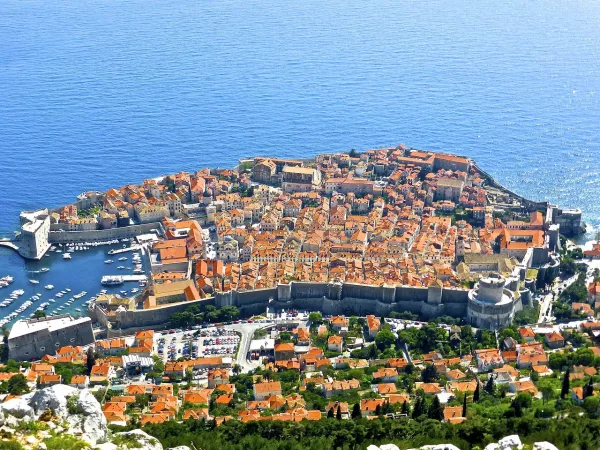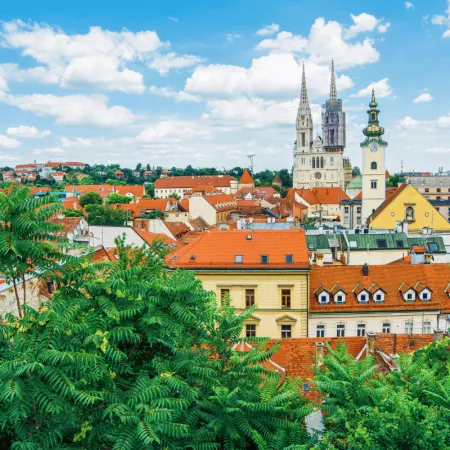Split Travel Guide
Split, located in Croatia, is a vibrant city known for its rich history, stunning geography, and unique cultural significance. This coastal gem is famous for its well-preserved Roman architecture, including the iconic Diocletian's Palace, a UNESCO World Heritage Site. Split is also a gateway to the Dalmatian islands, offering visitors a perfect blend of history, nature, and modern charm.Top Attractions in Split
- Diocletian's Palace
- Riva Waterfront
- Marjan Hill
- Ivan Mestrovic Gallery
- Bacvice Beach
Split is Famous for
Split is most famous for its stunning Diocletian's Palace, a Roman emperor's retirement residence turned bustling hub of shops, cafes, and museums.Top Attractions in Split
- Explore the ancient Diocletian's Palace
- Stroll along the picturesque Riva Waterfront
- Hike to the top of Marjan Hill for panoramic views
- Admire the masterpieces at the Ivan Mestrovic Gallery
- Relax and swim at the popular Bacvice Beach
What's Great about Travelling to Split?
- Rich history and culture
- Beautiful coastal views
- Delicious Mediterranean cuisine
- Easy access to nearby islands
- Friendly locals
What's Not So Great about Travelling to Split?
- Can be crowded during peak tourist season
- Some areas may be hilly and challenging to navigate
- Language barrier for non-English speakers
- Higher prices compared to other Croatian cities
- Limited public transportation options
Travel Tips for Split
- Check visa requirements before travel
- Use public ferries to explore nearby islands
- Stay aware of pickpockets in crowded areas
- Try local seafood dishes at traditional Konobas
- Book accommodations in advance during peak season
Important Split trip information
- Ideal Duration: A week is ideal to explore Split and nearby islands.
- Best Time to Visit: May to September for warm weather and festivals.
- Nearby Airports and Railway Stations: Split Airport and Split Railway Station provide easy access to the city.
Top 3 Places to visit in Split
FAQ's on Split
Q1: What is the best time to visit Split?
In Split, the best time to visit is during the shoulder seasons of spring (April to June) and fall (September to October) when the weather is pleasant, and the crowds are fewer. Summer (July and August) is the peak tourist season with hot temperatures and bustling streets. Winter can be quieter but some attractions may have limited hours. Consider visiting during local festivals like the Split Summer Festival in July for a cultural experience.
Q2: Do I need a visa to travel to Split?
Most tourists traveling to Split do not need a visa for stays up to 90 days within a 180-day period. This applies to citizens of the European Union, the United States, Canada, Australia, and many other countries. However, it is essential to check the specific visa requirements based on your nationality before traveling.
Q3: What are the must-visit attractions in Split?
When in Split, make sure to visit the UNESCO-listed Diocletian's Palace, stroll along the Riva Promenade, explore Marjan Hill for panoramic views, and wander through the historic Old Town with its charming narrow streets. Don't miss the Cathedral of St. Domnius, Peristyle Square, and the bustling Green Market for a taste of local life.
Q4: Is Split a safe place to travel?
Split is generally a safe destination for travelers. Like any other city, it's advisable to be cautious of pickpockets in crowded areas and avoid poorly lit or isolated places at night. The Old Town and main tourist areas are considered safe, but it's recommended to stay aware of your surroundings and belongings.
Q5: What is the local currency in Split and can I use credit cards?
The local currency in Split is the Croatian Kuna (HRK). While many establishments accept credit cards, it's advisable to carry some cash for smaller purchases and in case you visit places that may not accept cards. ATMs are widely available in the city for convenient currency exchange.
Q6: What is the local cuisine like in Split?
Split offers a diverse culinary scene with a focus on fresh seafood, pastries, and Mediterranean flavors. Try local specialties like grilled fish, peka (slow-cooked meat or seafood), and pasticada (beef stew). Don't miss trying soparnik (a Swiss chard pie) and fritule (small doughnuts) for a sweet treat. Vegetarian and vegan options are also available in many restaurants.
Q7: What transportation options are available in Split?
In Split, travelers can utilize public transportation such as buses, trams, and ferries to get around the city and explore nearby islands. Taxis and ride-sharing services are also available for convenient travel. Renting a car is a popular option for exploring the wider Dalmatian region at your own pace. Walking and cycling are great ways to navigate the compact city center.
Q8: Are there any cultural norms or etiquette I should be aware of when visiting Split?
When visiting Split, it's important to respect local customs and traditions. Dress modestly when visiting religious sites, greet people with a handshake, and avoid discussing sensitive political topics. Tipping is appreciated but not mandatory. Remember to remove your shoes when entering someone's home and be mindful of noise levels in residential areas. Embrace the relaxed Mediterranean pace of life and enjoy the warm hospitality of the locals.
Q9: I am a travel agent. How can I buy travel leads of Split?
Register yourself as a travel agent at agents.tripclap.com and then you can buy travel leads to Split once your account is approved. For more details contact our support team at +91-8069186564 or support@tripclap.com


